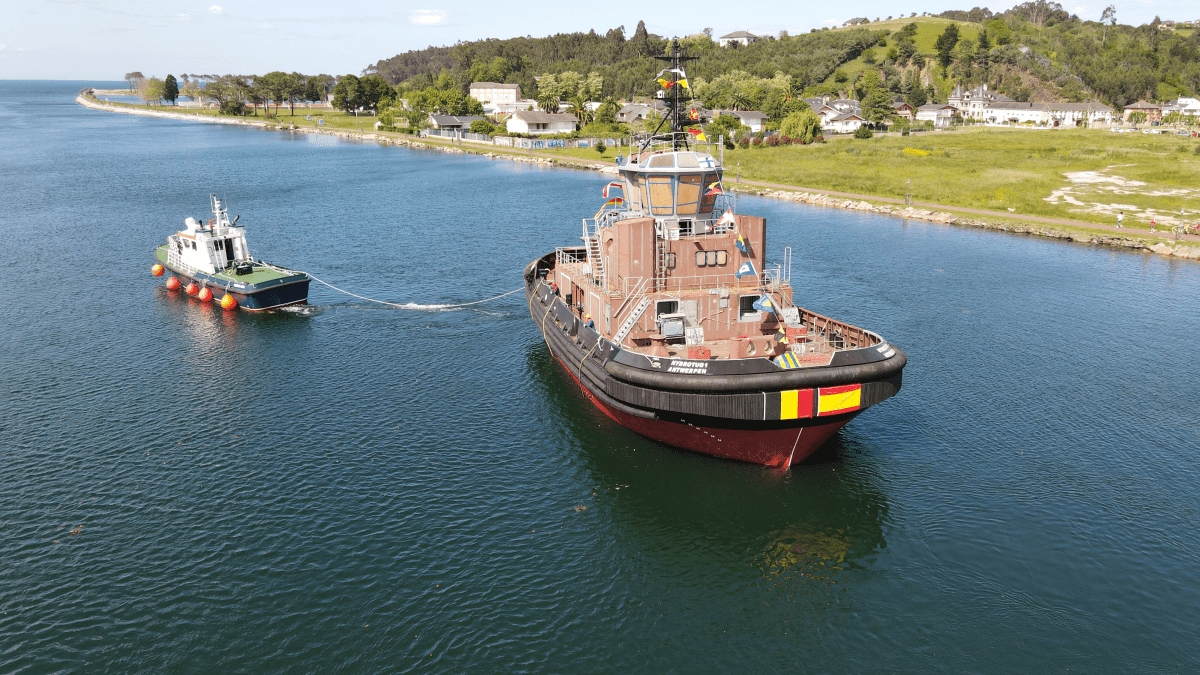With the first hydrogen-fuelled and methanol-fuelled tugs built and battery power firmly integrated, the tug and salvage sector looks at upskilling its work forces with enhanced training and consideration of the challenges posed by new fuels
Since the end of 2020, Riviera Maritime Media has been producing the International Tug & Salvage website and magazines. Riviera has reintroduced the importance of the salvage market within the brand with regular reports on the salvage and wreck removal industry and a webinar week dedicated to salvage.
Riviera has also taken over responsibility for the ITS Convention and Exhibition and TUGTECHNOLOGY conference series, adding the ITS Awards, including Tug of the Year, Tugowner of the Year, Innovation of the Year and a Lifetime Achievement Award.
Below is a list of International Tug & Salvage editor Martyn Wingrove’s favourite stories from the year, chronicling some of 2022’s major themes in the tug sector, towage and salvage:
First hydrogen-fuelled tug completed
With pressure on the maritime industry to reduce emissions, tug owners and port authorities preparing to use zero-emissions fuels for ship handling and towage. In 2022, the world’s first tugboat to use hydrogen for fuel was completed by Armón Shipyards in Navia, Spain, and arrived in the Port of Ostend, Belgium, 27 October. Here, it bunkered hydrogen fuel before conducting sea trials. Hydrotug 1 will eventually start work for the Port of Antwerp-Bruges Q1 2023.
This 4,100-kW, 496-gt tug was developed by CMB.Tech to store 415 kg of compressed hydrogen in six tanks installed on deck. Its propulsion configuration consists of two BeHydro V12 dual-fuel, medium-speed engines that can run on both hydrogen and diesel fuel.
First methanol-fuelled tug takes shape
If hydrogen, compressed or liquidised for storage, is deemed too complicated, costly and difficult to handle, why not try methanol?
The Port of Antwerp-Bruges is again the leader in developing methanol as a fuel for tugs, perhaps because it sees itself as a bunkering hub for alternative fuels. With this in mind, it is working with Anglo Belgian Corp, engineering companies Multi and Heinzmann and Swedish shipbuilder Scandinaos to convert an existing harbour tug into Methatug to trial methanol in dual-fuel engines. Methanol has better storage characteristics than hydrogen and is likely to become a more viable alternative to diesel in the medium-term decarbonisation drive.
The project is part of the European Fastwater project and is funded by the EU’s research and innovation programme Horizon 2020. As with Hydrotug 1, its success or failure will influence future investment in future fuels.
All-electric Sparky wins ITS Tug of the Year 2022
Alternative fuels have their benefits in terms of power, range and reduced air pollution, but for zero-emissions harbour operations, batteries are the way to go. Tug owners and port authorities are starting to see the potential for battery-powered tugs, and shipyards are beginning to build and deliver them to first movers and innovators. Gisas Power was the first, when delivered in 2020. The second was Sparky, designed and built by Damen Shipyards for Ports of Auckland and delivered Q3 2022. It was a worthy winner of the ITS Tug of the Year Award 2022 and the lead story in ITS TugWorld Annual Review 2022.
Virtual reality applied to tug training
With all the investment heading into tug design and propulsion systems for alternative fuels and electric power, the need for training is often overlooked. Tug crews will need to upskill to safely handle system advancements and technical changes on board.
I was invited to Portsmouth, on the English south coast to test training technologies including simulators and virtual reality at a new centre called the Maritime Skills Academy.
Using VR goggles and tug controls, I was able to manoeuvre a tug avatar in virtual reality around the harbour including completing a multi-point turn. My experiences at the academy and information on the future development of simulation training for seafarers were covered in a feature in the ITS /June 2022 issue.
Challenges of salvaging ships powered by new fuels
With an increasing percentage of the global fleet of merchant ships running on alternatives to heavy fuel oil and diesel fuels, salvors are worried about the potential new challenges when responding to ship collisions, groundings and sinkings of ships using these fuels.
Some of the more serious potential issues for salvors include the explosive characteristics and low flash points of some alternatives to oil-based fuel. These challenges were discussed in depth during a session at ITS 2022 and reported in the /December issue of ITS. Notable in the discussion is the original alternative fuel, LNG, which offers little in the way of examples or learnings for salvors, mainly due to the exemplary safety record of the LNG shipping and terminals sector.





